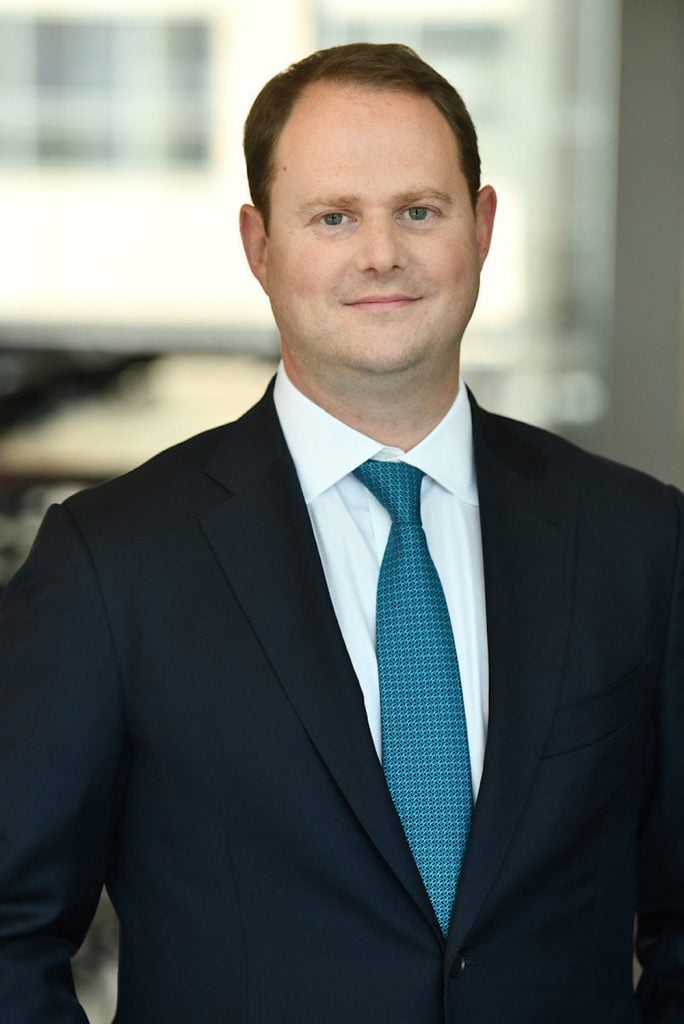Auctions
A Hedge-Fund Manager Who Once Tried to Acquire Sotheby’s Has Just Bought His Way Into a Top Job at the Auction House
The increasing financialization of the art market makes Klabin a solid fit for Sotheby's.

The increasing financialization of the art market makes Klabin a solid fit for Sotheby's.

Eileen Kinsella

Sotheby’s announced on September 23 that it has partnered with Alexander Klabin, the cofounder of the multi-billion-dollar hedge fund Senator Investment Group, to accelerate the growth of Sotheby’s Financial Services (SFS), which was founded three decades ago and provides art-backed financing options.
Klabin, who made an undisclosed financial investment in Sotheby’s, will serve as executive chairman of SFS, and will be responsible for leading and expanding its management team.
Last June, a New York Post report described Klabin as a “low-profile investor in his early 40s,” and said he was “among those who have been approached to finance” an offer to buy Sotheby’s, which eventually sold to French-Israeli telecom magnate Patrick Drahi for $3.7 billion. (Previously a publicly traded company, it is now private.)
Neither Sotheby’s nor Klabin has ever responded to reports of involvement in a competing bid.
It is fitting that someone with Klabin’s background joins SFS at a time when art financing is becoming ever more complex, with art-backed loans, bridge loans, and third-party guarantees increasingly becoming factors in the industry.
A source told Artnet News that Klabin has frequently been a third-party guarantor at all three major auction houses. (Third-party guarantors agree to back artworks at auction, and to purchase objects at predetermined prices should they not find another buyer. When works exceed minimum expectations and sell to another bidder for a higher price, the third-party backer shares in the profit for having assumed a degree of the risk.)
Specialists at a competing house joked today that Klabin’s new role at Sotheby’s may knock him out of the running as someone they can turn to when seeking guarantors.
Sotheby’s did not comment on whether Klabin’s new role limits his ability to do business with other houses. It did confirm that Klabin is primarily a collector of contemporary art, and owns works by artists such as Jasper Johns, Yves Klein, Gerhard Richter, Brice Marden, Philip Guston, and Roy Lichtenstein.
Sources say SFS is one of the auction house’s most lucrative businesses. Its business activities include extending loans to consignors for upcoming auctions (for instance, in cases where a buyer needs cash months ahead of the actual sale), or when artworks are used as collateral to back loans.
The upshot for the auction house is that risk is comparatively lower than it would be for a traditional bank, even one that caters to high-net-worth clients.
Lenders typically extend a maximum of about half of a work’s fair-market value for a loan. In the event of a default, Sotheby’s and other auction experts are not only fully equipped to determine the best timing, place, and method of sale, they even stand to make back double their investment, in addition to any additional premiums and fees on a given sale.
On the client end, the vetting process for a loan tends to be less stringent and sweeping, since the presumed value is in the artwork itself, making less relevant a comprehensive financial analysis that takes into account a client’s other assets, overall debts, and other financial holdings.
Because of this, sources say, clients often don’t mind paying SFS’s higher interest rates in exchange for the ease of the transaction.
“Sotheby’s is a special company that sits at the center of culture and commerce,” Klabin said in a statement. “Its proprietary data, specialized knowledge, and global relationships put it in an advantaged position to offer its clients a broad range of flexible financing solutions and services tailored to their bespoke needs. I’m excited to partner with the talented Sotheby’s team to accelerate the future of authenticated asset-based finance.”
Sotheby’s CEO Charles Stewart said Klabin “shares our vision of expanding the financing solutions we can offer to our clients and leveraging technology more effectively to develop new financial products for collectors.”
According to the Wall Street Journal, Klabin left the Senator group earlier this year following a “rift” with co-founder and partner Douglas Silverman, who continues to manage the fund. According to its website, Senator currently has assets under management of over $10 billion.